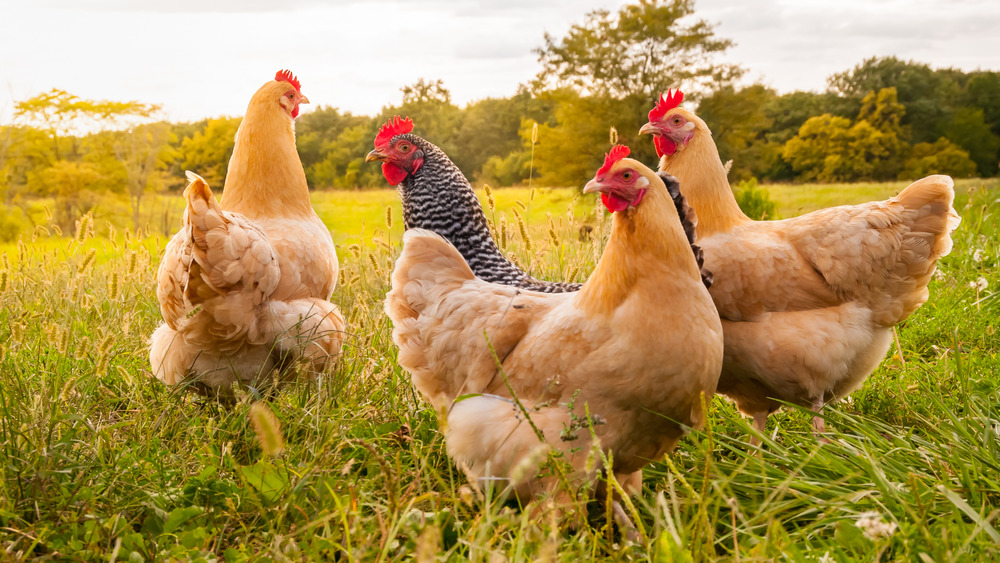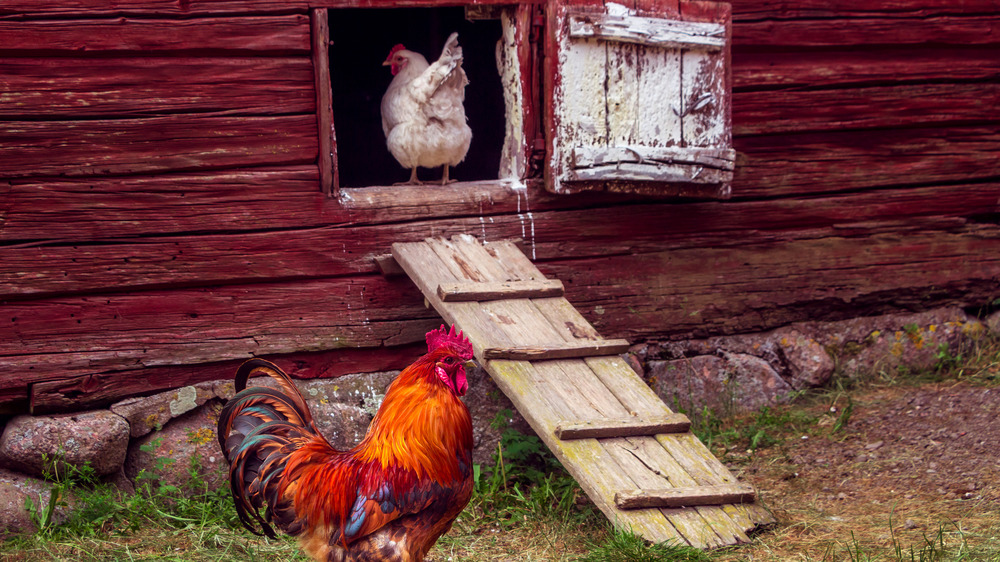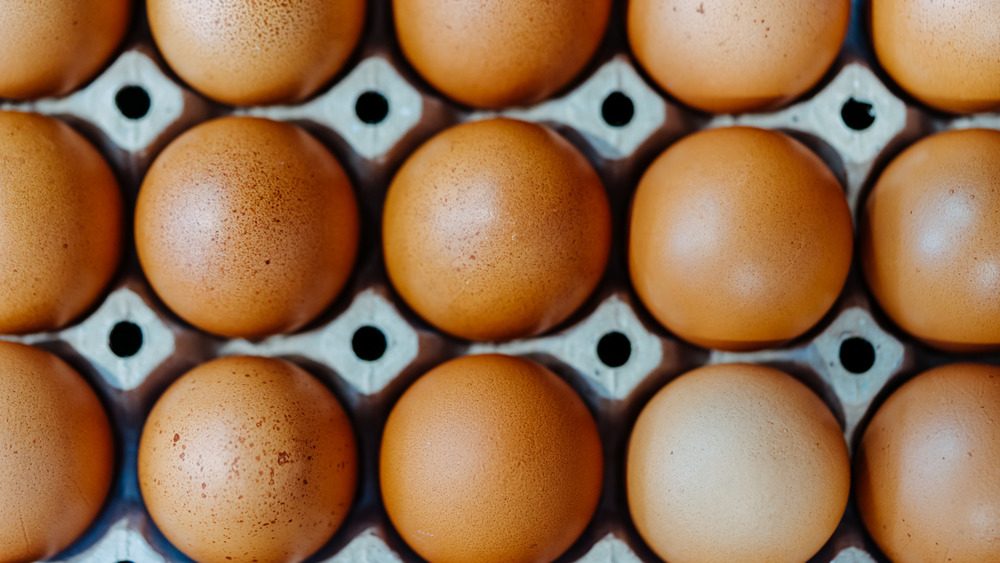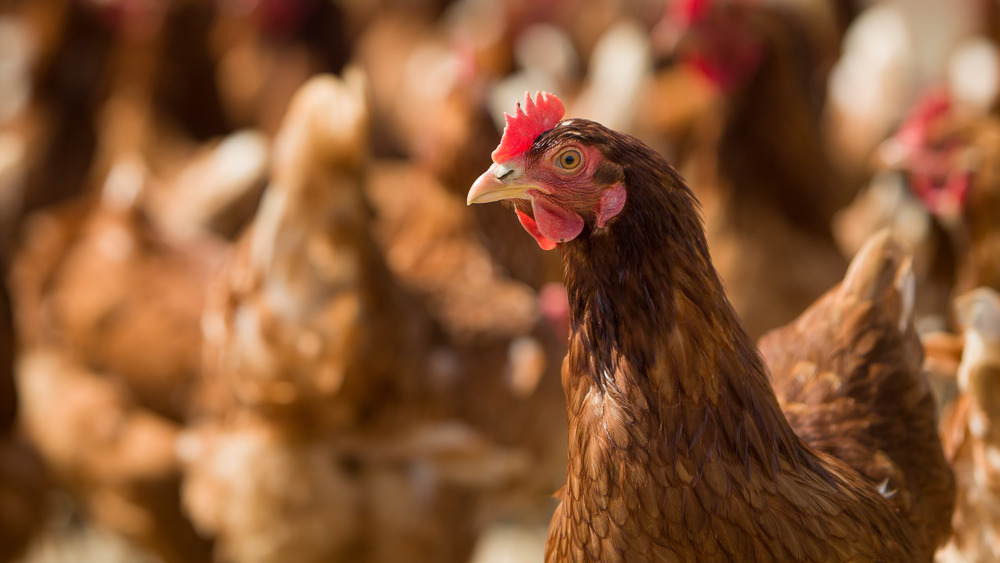Why 'Cage-Free' Doesn't Mean What You Think
It can be challenging to keep track of terms like cage-free, free-range, all-natural, pasture-raised, and the like. Furthermore, some have stringent requirements, whereas others are more a generic, catchall term.
As noted by New Republic, eight states have gone "cage-free" recently, and Utah's governor has signed a bill committing that all egg-producing chickens are cage-free by 2025. Cage-free chickens are said to be beneficial across the board, especially for the actual animals. New Republic also notes that 120 pounds of chicken (!) is consumed by the average American annually, which directly results in the deaths of about 9 billion chickens per year. In addition, Americans consume a ton of eggs. It is also important to note that chickens and eggs come from two entirely distinct industries — and all of this adds up to a wide range of problems throughout the industry — for the workers, the chickens, and the environment, and COVID has worsened the issues at hand.
While you may feel better about eating eggs as opposed to chicken, the egg industry alone is no better. Cage-free production has no "single, legally defined standard" (via New Republic), so the idyllic image of chickens roaming about — unencumbered by barns or cages — is generally fictional.
What is cage-free?
Eater notes that the technical definition of cage-free means that hens can "freely roam a building, room, or enclosed area with unlimited access to food and fresh water during their production, but do not have access to the outdoors." But the outlet also reports that this often leads to more violence and less clean air for chickens, so it's certainly not simple to say "cage-free is ideal." United Egg Producers says that each hen must have "one to 1.5 square feet each," which is not the minimal amount of space needed for an average chicken to even turn around comfortably (via New Republic). Of course, there are many other issues that also need to be tended to, whether cage-free or not: treatment, dimensions and layout of space, access to quality food and water, etc.
Ethically produced eggs also cost more because they require more expensive production factors, like the hens' living situations, according to Best Food Facts. In addition, it should be noted that there are no differences in the nutritional content of the eggs, but some studies have found higher magnesium and beta-carotene levels in free-range eggs, according to Medical News Today.
What is the difference between the types of eggs?
As of 2018, about "97 percent of egg-laying hens in the US are confined to what are known as battery cages," which hold five to ten birds each, according to Vox. Of course, that is not the optimal environment to foster healthy egg laying. There are alternatives that provide better options for the chicken, such as barn systems, aviary systems, and enriched cages, but each have drawbacks — and can cost enormous sums.
Also, certain chickens benefit more from certain environments than others, and egg production is directly related to these conditions. "Free range" requires that the hens are allowed outside, but the specifics of that aren't detailed — so that might mean a tiny little window in which the chickens are allowed to access a tiny outdoor area. Pastured is not legally defined either, as The Spruce Eats reports.
Other terms, like "local," means the eggs must come from within 400 miles and organic means hens must be fed an organic diet. Hormone-free means the hen "wasn't administered hormones" and "no added antibiotics" is essentially an empty term because chickens are rarely ever given antibiotics (via Eater). At the end of the day, stamps such as "certified humane" or "animal welfare approved" are generally a safer bet than any of the other buzzwords.
What kind of eggs are the most ethically produced?
On the flip side, 15 years ago, three precent of the egg industry was cage-free, but now, it is about 30 percent (via The Salt Lake Tribune). Furthermore, the newly passed legislation will mandate that "farms with more than 3,000 hens will have to improve facilities, a process that will cost the industry nearly $250 million." This is great news — but there's still so much more to be done.
Egg cartons that come with an "Animal welfare approved" stamp or sticker are generally the most ethically produced eggs, according to Vox. In addition, eliminating cages is really only the first step towards animal welfare, not an overall balm. Also, the "cage-free by 2025" is nothing more than a pledge, as Vox reports that there is no body or legislation holding them accountable or up to standard. While each change, no matter how incremental, can help to better the industry — how much time (and money) would be necessary in order to truly improve the conditions for the workers and the chickens alike? While Bill 147 is certainly a step in the right direction, it's going to take a lot more for America to craft a chicken and egg food system that is truly ethically sound.



